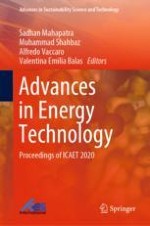2021 | OriginalPaper | Buchkapitel
9. Differentiating Storage Essentiality in Thermoelectric and Non-thermoelectric Integrated Conventional Microgrid
verfasst von : Sasmita Jena, Shalini Patro, Subham Subhrajeet Barik, Sanjeeb Kumar Kar
Erschienen in: Advances in Energy Technology
Verlag: Springer Singapore
Aktivieren Sie unsere intelligente Suche, um passende Fachinhalte oder Patente zu finden.
Wählen Sie Textabschnitte aus um mit Künstlicher Intelligenz passenden Patente zu finden. powered by
Markieren Sie Textabschnitte, um KI-gestützt weitere passende Inhalte zu finden. powered by
